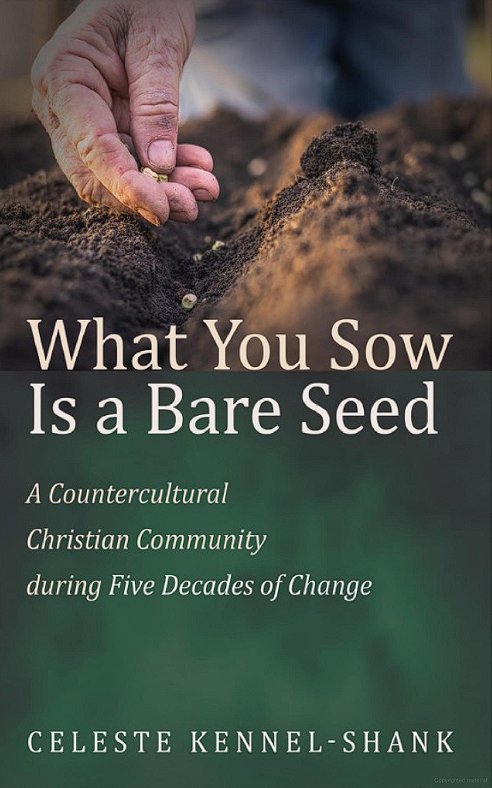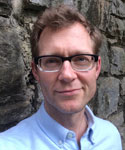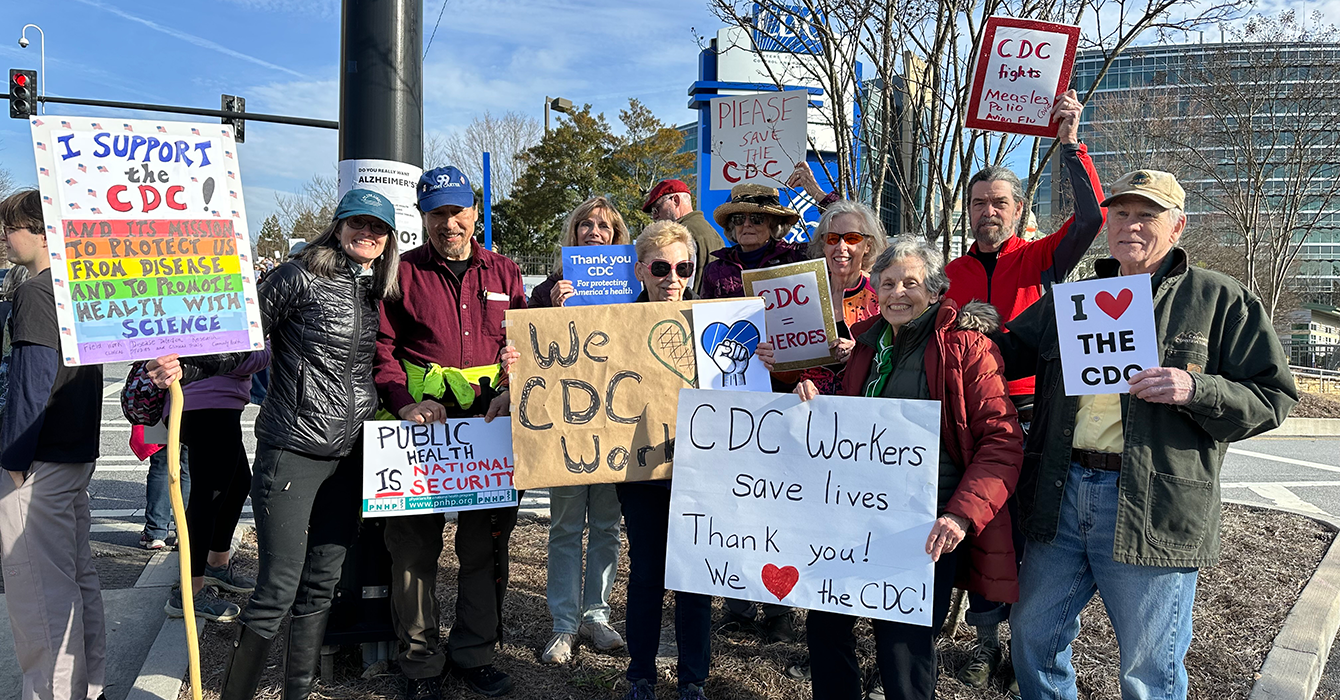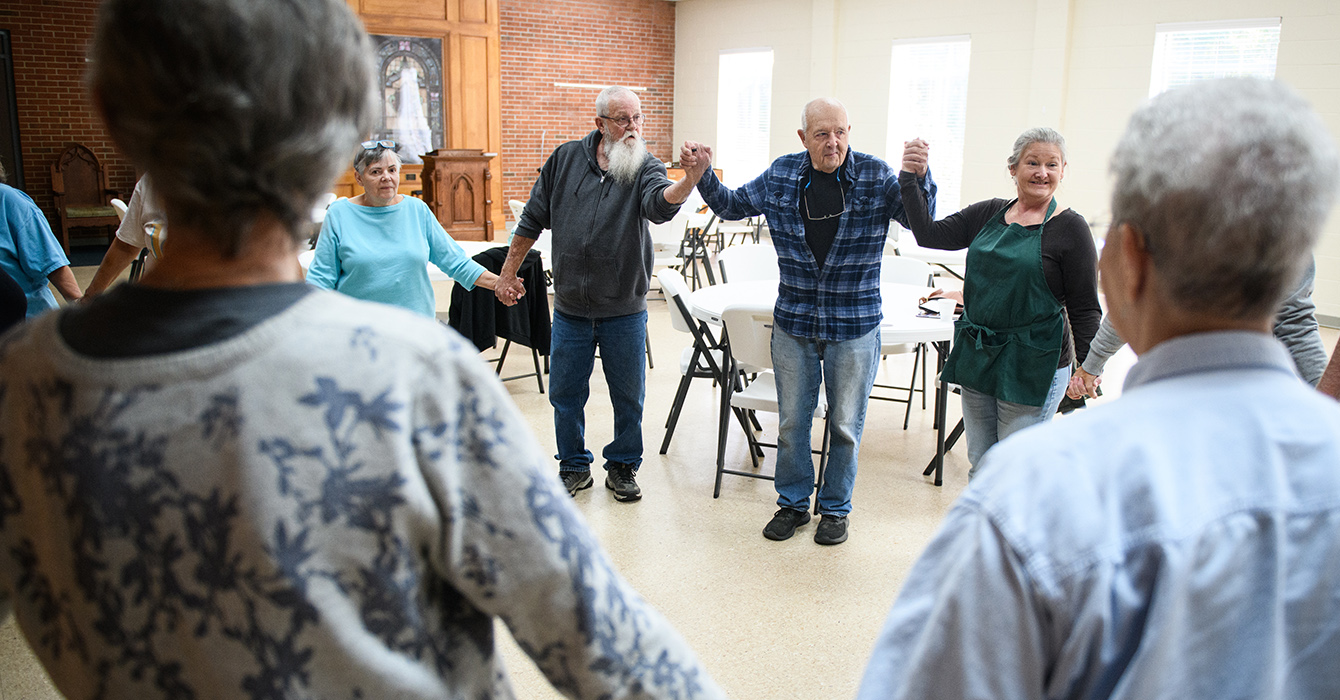At a time when white flight was the norm in inner-city Washington, D.C., and new churches were springing up in the suburbs, John and Mary Schramm had a different idea: to establish a congregation in the city that would serve a 1-square-mile parish.
John persuaded the American Lutheran Church’s board of missions to take a chance on this vision and was approved to start a “package mission” in the Mount Pleasant neighborhood of Washington, D.C., near Dupont Circle. It was called the Community of Christ.
The Community of Christ’s first worship was held Feb. 2, 1965. Five decades later, in 2016, Community members past and present came together for a final gathering.
During the time in between, Community members had lived near each other in the same neighborhood, practiced economic interdependence, worshipped together and, despite initial misgivings about owning a building, purchased and run a neighborhood center called La Casa.
They had decided to close in 2015; the gathering in 2016 was to celebrate the 51 years of the Community of Christ and to reflect on its significance for those who were a part of it, and the neighborhood they served.
Celeste Kennel-Shank was among them. She had joined the Community of Christ in 1990 with her parents, Duane Shank and Ellen L. Kennel. Kennel-Shank grew up in the Community, enveloped in the vision of an ecumenical, parish-based Christianity.
“It was a place where we always knew we belonged and where we were always free to ask any questions,” Kennel-Shank said. “We sometimes had Sunday school — kind of haphazardly. It was just primarily a really loving, embracing place to grow up.”

She is now a Mennonite USA pastor in Chicago as well as a journalist, and she recounts the story of her childhood community in the new book “What You Sow Is a Bare Seed: A Countercultural Christian Community During Five Decades of Change.” It tells the story of the decadeslong experiment, drawing on interviews, books and other records.
Kennel-Shank spoke with Faith & Leadership’s Sally Hicks about her experience growing up and about the faith community that shaped her. The following is an edited transcript.
Faith & Leadership: Why did you write this book?
Celeste Kennel-Shank: I see it as a biography. It’s a biography of the Community as a whole, and of the people, because they were people whose lives were well worth documenting and sharing.
It’s been enormously gratifying when I’ve had book events and people tell me, “Oh, I’m halfway through the book, and I just loved Dora” or, “Oh, I just loved Doug.” I loved them too. They were amazing humans, really reflective and really thoughtful people. I think we can all learn a lot from listening to them. I know I did.
I was at the 2016 final retreat and 51st anniversary reunion of the Community of Christ. At that time, a group of us started talking about how it would be wonderful if someone wrote a history. Over the few years after that, we decided that my combination of theological education and journalistic background would allow me to tell this story in a compelling way.
F&L: What drew your parents to the Community of Christ originally?
CKS: My 20 years as a journalist began when the religious landscape was in a place where people were really starting to recognize the shift in the church institution.
When I came to this story, I realized that the Community of Christ was gathering what we would now call “spiritual but not religious” folks and folks who were interested in Christian faith in some form but not institutional religion, not organized religion. I started looking at all these folks and realizing they were like a lot of the people I’ve interviewed and written about over the years.
These are folks who had a lot that they were carrying, heavy spiritual wounds in the 1960s and ’70s. My parents left the Mennonite tradition of their upbringing. My parents grew up plain-dressing Mennonites in southern Pennsylvania, and they left that tradition after they left college.
But my parents, after I was born in the ’80s, started seeking a little, and they tried a Unitarian Universalist church. They met David Anderson, who was a primary lay leader of the Community of Christ for a lot of its time, at a neighborhood soccer game. My dad decided to give it a try, and my mom decided to give it a try. And then before we knew it, we were all in.
F&L: What was it like for you, as a child and now as an adult looking back on that childhood, to grow up in the Community?
CKS: It was wonderful. It was the safest place I knew as a child.
People didn’t live all in the same structure — it wasn’t like intentional communities in that way — but most of us lived in the same neighborhood. So you would see someone at Community gatherings, and then you would see them during the week.
One historian has called the neighborhood where we grew up, Mount Pleasant, in D.C., a “village in the city.” For us growing up in the Community of Christ, it really enhanced those qualities. It really did feel like a village in the city; we had this wonderful multicultural context in which to grow up and we also had this really loving church community.
F&L: It’s interesting that as an adult you’ve stayed involved in organized religion. Are you rejecting the rejection of your parents?
CKS: There are about two dozen of us who grew up in the Community of Christ. All of us speak really well of the Community. I mean, there are some critiques, to be sure, but nobody had any deep wounding. But for the most part, those people have not gotten involved in organized religion or really in anything.
I think there’s just a hunger that I’ve had to stay involved in faith community. I know I can’t re-create what I once had, but I now pastor an emerging community of faith, as we call it in my denominational tradition.
I want a relationship with Jesus with other Christians. And that’s why I am a pastor.
F&L: The Community of Christ made certain decisions about how they would be in the city, and also how they would be together. Could you give a summary of the principles of the Community?
CKS: The Community was unique insofar as it was a particular synthesis in a particular place of principles that were part of the ferment in the church and in society at that time. But I do want to give credit where credit is due, and so I name some of the influences.
So several of the primary ideas: one was the square-mile parish model. That’s an idea that they received through the influence of others, most specifically George Webber, who wrote a book, “The Congregation in Mission,” that was really influential for the early Community. He was part of East Harlem Protestant Parish, and it was the idea that Catholics were on to something with the parish model.
A second important principle for them was the idea that ministry is shaped by the gifts of the people who come, not the pastor and the governing body [who] get together and decide, “This is what we’re going to do for mission, and now let’s go out and find the people.” The people who come are the people who shape the ministry.
F&L: In some cases, that means somewhat unusual ministry, like a plant shop.
CKS: Exactly. That idea of gifts shaping ministry was due to the influence of the Church of the Saviour, and Gordon Cosby and Mary Campbell Cosby, who were located nearby. Also Elizabeth O’Connor. She fleshed out that idea in her books beautifully.
I think where the Community put its unique spin on it was that they emphasized that everyone can have a dream — not only gifts, but that they could have a dream. The Community is there to help people discern how to make their dream a reality.
Third Day plant shop was a beautiful example of that. Anna Mae was a woman who felt that there wasn’t enough access to nature in our homes in the city. That was Anna Mae’s dream, and the Community helped her make it a reality in a community-oriented way. It wasn’t just a plant shop.
F&L: The Community of Christ wasn’t an intentional community, but they lived in the same neighborhood and were committed to that neighborhood. How did that work?
CKS: They didn’t live in the same building. Some people did live in houses together. Many people lived in adjacent houses or houses across the street from each other, houses a couple of blocks down.
They didn’t have a common purse. They didn’t live in a commune. But they practiced economic interdependence in a city neighborhood, which in some ways, I think, is even more instructive for life today. In a lot of our cities, it’s not possible for a group of people to buy a building together with eight units or 16 units or something.
So we have to figure out, “OK, how do we do community and how do we practice economic interdependence when we live one of us over here and one of us two blocks over?” In that way, I think, the Community was really on to something, that it doesn’t have to be all or nothing.
F&L: How were people interdependent economically?
CKS: One of the things they started doing was to share. They made a list and thought about what household objects can you feasibly have one of among eight or 10 households so that everyone didn’t have to each own.
They asked themselves, “What can we share?” They came up with an aluminum extension ladder, a waffle iron. Several of the families also shared a car, because most of them took the bus to work. In a major city, that’s very doable. So they had one car for, I think, five or six households.
They also created an emergency fund. In the pandemic, a lot of people have talked about mutual aid. And Mennonites, we’ve been using that term for centuries. They had an emergency fund; if anyone had a bill that came out of the blue, that they were not expecting, that they couldn’t pay, the Community would pay it for them, and then they could gradually replenish the fund.
F&L: As you look back at the history of the Community, what do you think would be the lessons for today for folks who are thinking about the church in experimental ways?
CKS: I wrote it as a group biography, highlighting the amazing people who were the core leaders of the Community — primarily, the core lay leaders. I really want to emphasize that this is a book for lay leaders who are dreaming up different ways of being community alongside pastors.
Lay people are so integral to starting these communities and sustaining these communities. The people who made up the Community of Christ were primarily people who had other jobs. I think the part that’s getting harder these days is that our culture is shifting so much to more and more work, and more and more work expected of people.
The other thing I would say: we sometimes don’t realize how much we need each other. Growing up in the Community, with almost all of my biological family at least two hours away, the Community [members] were our emergency contacts. They were people who showed up for me in some of the most difficult moments of my life, showed up for my family.
There are just such enormous benefits to being part of a faith community. The Community took a lot of risks to say, “Hey, you’re going through a hard time right now. I’m not going to let you go through it alone.”
F&L: Another one of the unusual things about this that’s pertinent today is the way the Community intentionally closed. Talk a little bit about that process and that decision making.
CKS: It was amazing, and I can praise it to the heavens, because I wasn’t involved in it! It was people who were still in D.C. at that time and still involved in the Community’s weekly gatherings.
It took years. That’s one of the things I’ve heard from other churches as well, and it’s important to emphasize: it took several years.
They started having the discussions seriously in 2013. The Community of Christ belonged to the Evangelical Lutheran Church in America, even though it was fully ecumenical for its whole life. They met with the bishop at the time and the bishop’s assistant, and they were really helpful in helping the Community through some of that discernment.
The building they owned did not look like a church, so it was a different situation from what many churches find themselves in. It was still plenty of work to maintain this building as a community center. They just were at a point where that wasn’t how they wanted to spend their energy. So they put out a request for proposals.
One of the members of the Community guided the process of reaching out to other organizations they had worked with and asking for a proposal for how they would use the building if they were to receive the building for only the remaining mortgage and the closing costs. The total was around $100,000.
They ultimately chose La Clinica del Pueblo, which is a federally qualified health center and health clinic. They had a clinical space nearby, but they especially wanted a place where they could do more health education and more support groups.
They specifically wanted to do their outreach program for LGBTQ Spanish speakers. As we know, for a lot of folks who are LGBTQ, medical environments, clinical environments — there can be a lot of trauma around that.
The other group that they have is domestic violence survivors who needed a space where they could feel safe that isn’t the clinic where their abusers are often receiving care, because the clinical space doesn’t deny care to anyone.
So the building was transferred in December 2016, and everyone I’ve talked to in the Community just feels so wonderful about what it is now. I get goosebumps when I walk by it whenever I’m visiting. It’s the same building — and it’s different.
F&L: One thing we haven’t talked about is ultimately how the relationship over the years between the Community and the neighborhood went. What was the relationship with the community?
CKS: A big part of that relationship was through the short- and long-term renters in La Casa.
Everything from the advisory neighborhood commission to drumming circles [met there]. I remember one summer there was an arts workshop for children that I went to along with a bunch of kids who were our neighbors. Community groups used La Casa as a space where they knew they could have an evening event or a six-week series.
And then there were longer-term renters like this community low-power radio station, which was started by someone who grew up in the Community of Christ and others. And so that was a way that a lot of people knew La Casa.
They also had punk benefit shows as fundraisers for various social justice causes in the city. D.C.’s punk rock community is very social justice active. So a lot of people knew the building through that space. It was a popular place to go to all-ages punk shows.
A lot of people did not know that there was a worshipping body there. They knew that it was a building that was open to the community, but they really didn’t think of it as a church, and many of them didn’t know that there was a Christian group.
F&L: Again, as people are facing the closing of churches now, would you draw any lessons from the process of selling the building and decommissioning the Community, essentially?
CKS: One of the things I learned for myself is to let myself mourn the loss. Again, I wasn’t involved, so I have zero critiques about the way that the Community members who ran that process ran it. And yet it was enormously sad. I didn’t realize until the final retreat just how sad it was that it was ending.
And I think that’s a really important part of the process. Whatever a congregation’s context is, have a time when people can gather and feel sad about it and not just emphasize the positive. Something can be the right decision and you can still mourn it, because something is ending.






















